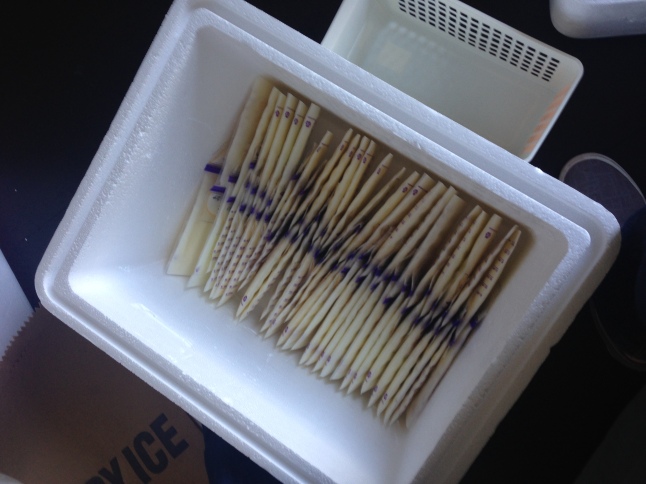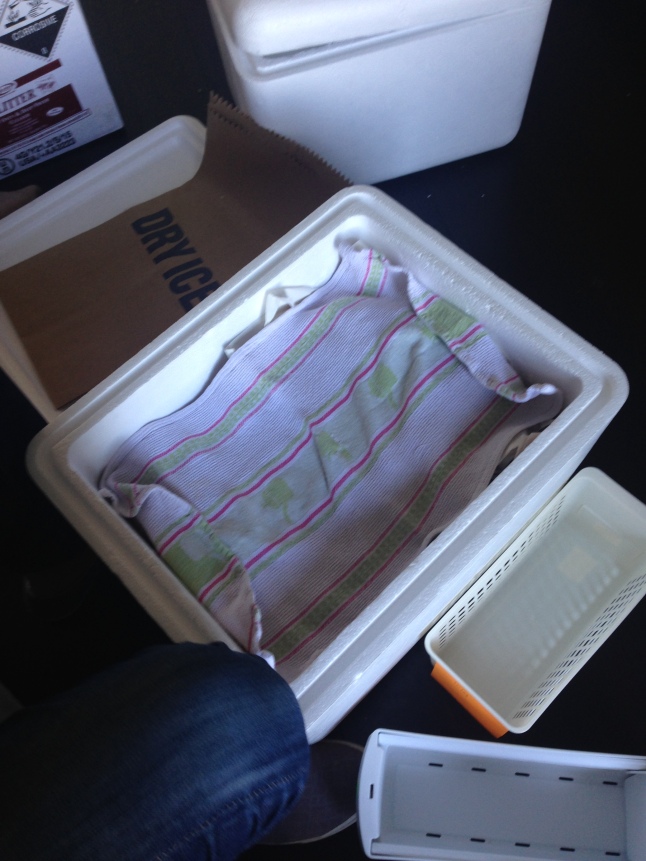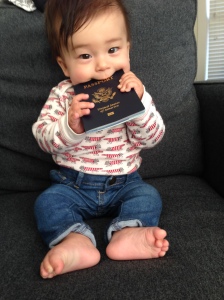A friend of mine just had a beautiful baby girl! Natural birth. 9 pounds, 3 ounces. Yowza! My friend is one bad ass motha….!
Even though it’s only been 10 months since Baby E was born, I actually forgot how hard the first couple weeks are. I recall other moms noting this when Baby E was just weeks old. I remember thinking, “really? you forget? how on earth can you forget the painful breastfeeding sessions or the excruciating sleep deprivation?” But, alas, it’s true; you do forget. How? Evolution, my friends! Humans have been programmed to undergo selective memory loss during this time, so that new offspring can be conceived and brought into this world.
Anyhow, with my amazing friend in mind, here are 10 ways that helped me survive the first few weeks!
1) If you’ve decided to breastfeed, see a lactation consultant sooner than later. Even if you’re a breastfeeding prodigy, accept the fact that breastfeeding is hard work. Whether it’s the pain, the fatigue, or baby being fussy, breastfeeding is not always unicorns and rainbows. A certified lactation consultant can provide you with valuable information on proper latch techniques, different ways to position baby, and solutions to common issues like engorgement, over/under production, or nipple pain. Above all, seeing a lactation consultant will give you a much needed confidence boost in knowing you aren’t doing it totally wrong.
2) Get comfortable breastfeeding gear. Breastfeeding does a real number on your lower back due to all the hunching. Having adequate breastfeeding equipment can make a huge difference in your overall comfort. These were some of my major lifesavers: My Brest Friend breastfeeding pillow (I highly recommend this one versus the Boppy pillow), a nice hefty pillow to put behind your back (the key is to be upright as possible), an adjustable step stool, and nipple cream (Earth Mama Angel Baby was my fave).
3) Bottle feed when you need a break. As previously stated, breastfeeding is tough. Your nipples are being pulled and manipulated in ways that you never thought possible. That said, it’s okay to close up shop from time to time. Warm up a bottle of expressed milk or formula and let dad, partner or a friend feed the baby. And while they’re is doing that, take a moment for yourself and do whatever your heart desires! Sleep, take a shower, manicure – whatever. Do it!
And on that note, if you feel as though formula is the better option for your baby – do that! There are many different varieties of formulas available — all of which perfectly fit the needs of growing newborns.
4) Don’t be afraid to tell your friends what to do. You’ll hear over and over again, “let me know if you need help with anything?” And over and over again most new moms will say, “thanks. I will,” but they don’t! I was guilty of this, but in retrospect I wish I wasn’t. If a friend is asking you this quesiton with sincerity, there is no shame in simply accepting their offer. Ask them to come over and vacuum, clean the house, make a simple meal, get you some groceries, etc.
….And, if they weren’t being genuine, joke’s on them – muahahahaha!
5) Rely heavily on delivery services. Now is not the time to be “mom of the year.” The first couple of weeks is all about short cuts. Take advantages of the many services out there like:
- Meal delivery: Munchery (used this about 3 times a week!), Spring, Spoonrocket,
- Grocery delivery: Safeway.com, Instacart (ummmm, used daily!), Google Shopping Express, Amazon Fresh
- Food delivery: Seamless, Postmates, Grubhub, Caviar
- Cleaning service: Homejoy (seriously, god send!)
* Not all of these services may be available in your area. I was lucky enough to have had Baby E in San Francisco – the land of internet start ups! No, really, there IS an app for that!
6) Don’t stress out about not “sleeping when baby sleeps.” I got this tip so many times from people, and each time it made me want to scream! I’m one of those people who just can’t fall asleep at a drop of a hat – no matter how tired I am. Rather than have a rejuvenating slumber, I would just lay there thinking I should be sleeping. And it would stress me out! So, instead, I give you this tip: do whatever relaxes you the most while baby is sleeping!
7) Get help, but not from a friend. As tip #4 reminds us, it’s not easy to accept help from friends. You don’t want to be a bother, I get it. So, take out the emotions and just hire help if needed.
Baby E was a super colicky and the first couple weeks were probably one of the hardest experiences that my husband and I ever faced. Rather than take friends up on their offer to watch Baby E for a couple of hours while we got rest, we decided to hire a night doula/nurse. Best decision ever. Even if it was just for a night or two, it gave us the respite we desperately needed — without the guilt or worry that we were imposing on friends or family. Double win!
8) If you’re sad, be sad, but get the help/support you need. Don’t ever be ashamed of feeling low, sad or depressed after having a baby. Postpartum blues are real and super common, but it’s critical that you seek the help or support that you need.
I definitely felt the “baby blues” soon after having Baby E and sought the support of a therapist to talk out my concerns, anxieties and feelings. Just saying my feelings out loud made a huge difference in stabilizing my emotions during the super stressful time of new motherhood. Be kind, good, and honest to yourself.
9) Join a mommy group. There’s just something undeniably comforting about knowing that you’re not crazy! For real though; it’s so nice to know that someone else is going through the exact same hellish sleep deprivation as you, or that sudden outbursts of tears are totally normal, or that it’s completely okay to feel like you have no idea what that hell you are doing.
Joining a weekly mother’s group was truly the best thing I could have done for myself and Baby E. The mother’s group I joined (CPMC’s Newborn Connection’s mother’s group) became my weekly “sanctuary” where I was – without judgement – able to vent about my husband (marriage quarrels happen to the strongest of couples), cry about how exhausted I was feeling, celebrate a new milestone that Baby E was exhibiting, or learn a pretty amazing tip on how to get baby to sleep. Without a doubt, my mother’s group helped get me through the toughest times of the newborn phase.
There are many local mother’s groups out there, but they tend to differ on style/vibe, so just make sure that it’s the right fit for you.
10) Say out loud “Things will get easier.” And repeat. This is exactly what I said to my friend last night, who was having a particular hard night with her newborn. I told her that things will just get easier. It really does.










